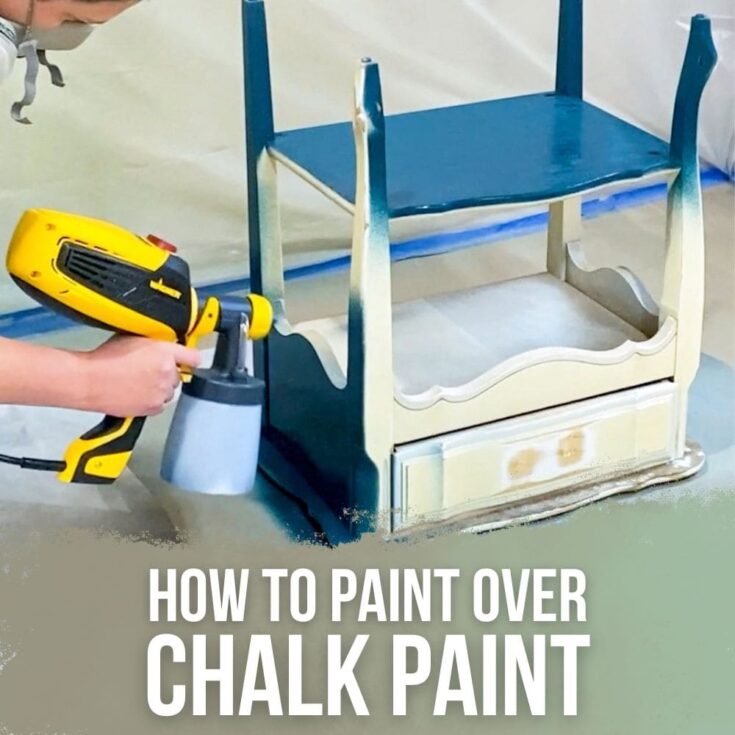How to Paint Over Chalk Paint
What happens when you want to change the look of your chalk painted furniture? How do you go about painting over chalk paint? In this blog post, we’ll discuss how to paint over chalk paint (properly) so your furniture looks as good as new!
Painting furniture is a fun and affordable way to give any piece of furniture a fresh, modern look. But if it isn’t done right, all of your work can go down the drain.

Painting over chalk paint is easier than you might think. But the key is to make sure you properly prepare the surface before applying any new coats of paint.
So let’s dive into the right way to paint over chalk paint so you can create a beautiful finish that lasts for years to come.
First, here are the supplies to use when painting over chalk paint.
Supplies for How to Paint Over Chalk Paint
As an Amazon Associate, I earn from qualifying purchases. I also may earn from other qualifying purchases with other companies or get free product to review and use. All opinions are my own.
- Mineral Spirits (If needed)
- Old Rag (If needed)
- Krud Kutter
- 220 Grit Sandpaper
- Vacuum
- Tack Cloth
- Primer
- Respirator
- Chalk Paint or choose from this list of furniture paints
- Topcoat
Determine how long ago the Chalk Paint was applied
First, we need to know how long ago the furniture was painted with chalk paint.
Was it recently, within the last 2 months? Or has it been painted longer than 2 months?
As a rule of thumb:
- If it was painted within 2 months, then we need to move to the next step.
- If it has been painted longer than 2 months, then you can probably move on to cleaning the surface and sanding.
If you aren’t sure which one to do, or if you want the best results possible, move to the next step and remove the wax with mineral spirits.
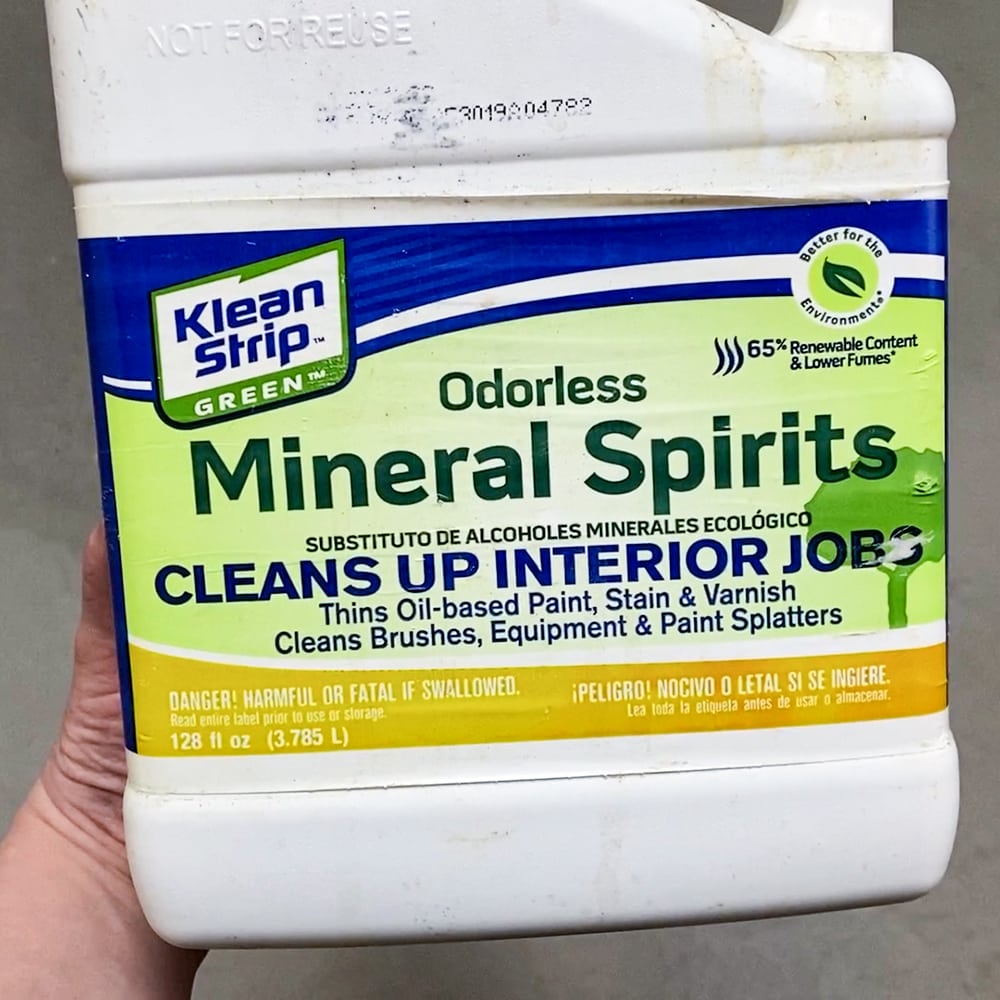
Why does it matter? Well, paint and topcoats take about 30 days to fully cure and harden. Wax takes a little longer.
If it was topcoated with wax, and the wax hasn’t had time to completely cure, then we need to remove it before we sand or try to paint over the wax.
Paint will not stick to wax. Just think of how wax repels water and many other things. It does the same with paint. If the wax has had ample time to cure, then it shouldn’t be an issue. We will take some steps to make sure the paint will adhere either way.
Identify what type of topcoat is on it
So, that brings us to the next step… do you know what type of topcoat was used to seal the chalk paint?
If you don’t, then hopefully you know whether it was painted in the last 2 months or not.
- If the chalk paint has wax or oil (furniture salve, hemp oil, etc.) as a topcoat, and it was applied less than 2 months ago, then you will need to remove the wax or oil.
- If it was topcoated within the last 48 hours with a waterbased polyurethane or oil based (also called polycrylic) then I would suggest waiting 48 hours after you topcoated to make sure you don’t have issues with your new paint crackling, or waterbased and oil based products creating issues.
- For any other situation, you can move on to cleaning the surface and sanding.
Polyurethane (waterbased and oil based) fully cure in a month. Waterbased polyurethane (or polycrylic) dries to the point that it can be sanded within a couple of hours.
Oil based polyurethane dries to the point that it can be sanded within a couple of days.
If necessary, remove wax with mineral spirits
If your furniture was waxed within the last 2 months, you’ll need to remove the wax with mineral spirits to make sure the paint can stick to the surface.

No, chalk paint cannot stick well to wax. Trust me. It will easily scratch off.
Even after 2 months of the wax drying, you will still get better results if you clean the furniture with mineral spirits before painting over the chalk paint.
How to Remove Wax from Chalk Paint
This step is pretty simple.
Remove any hardware so you can remove the wax from the surface effectively. Use mineral spirits and a rag to rub off the wax. You can also use a brush or a scrubby sponge too.
Do this all over the surface until you remove the wax. It will feel different when you have removed the wax.
Then let everything dry completely.
Since you basically just cleaned your furniture, you don’t need to do the next step which is cleaning the surface. Once dry, you can move on to sanding.
Clean the surface to be painted over
If you didn’t need to remove any wax, start here.
If you haven’t removed the hardware yet, remove it now.
Clean your furniture with a degreasing cleaner (I like Krud Kutter) to remove any grime, oils, or gunk.
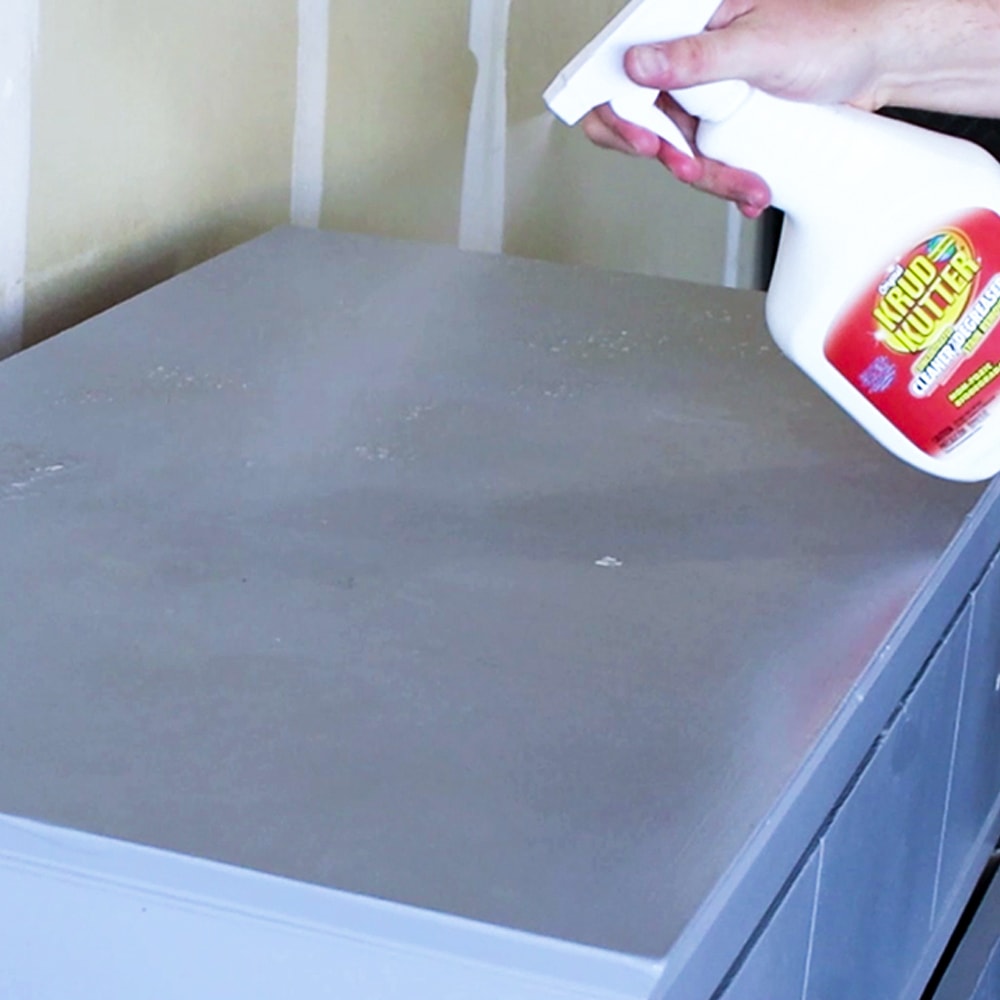
If you don’t do this before moving to the next step, the gunk and oils can gum up your sandpaper, but worse, they can get heated up and melt into the surface you are trying to paint.
Paint does not stick to gunk, grime, and oils. So we need to get those removed.
Learn more about cleaning furniture before painting.
Sand any chipped paint for a smooth finish
Once dry, you can use 220 grit sandpaper to scuff sand the surface. Sand smooth any chipped paint to make your surface smooth for the next round of paint. Scuff sanding will also remove the shiny slick coating that can make paint easily scratch off.
We want to scuff up the surface to help the next paint job stick well.
If the chalk paint easily scratches off when you sand it, it’s best to sand the old paint off. If your first coat easily scratches off, the next layer of chalk paint will also easily scratch off.
Learn about the importance of sanding before painting furniture here.
Clean up the dust with a vacuum and then wipe your furniture down with a tack cloth to remove any dust that remains.
Prime Before applying new paint
Then prime your furniture with one of these best primers for painting furniture. For chalk paint, I personally like spraying on clear shellac the best. But it’s stinky, so use it outside.
The primer will help the chalk paint stick to the furniture better, but it will also help stop stains from coming through the paint.
So even though it’s tempting (I know!) don’t skip this step.
For best results, let your primer dry overnight before you paint over it.
Repaint your furniture
You’ve made it! Now it’s time to paint again!
You can use chalk paint again, or you can choose from these types of paint for furniture if you didn’t like the chalk paint.
Check out this guide on repainting furniture to learn more.
But if you want something that looks a bit more like stained wood, then gel stain over white paint is a great option which can create a faux stained wood effect without removing the old paint.
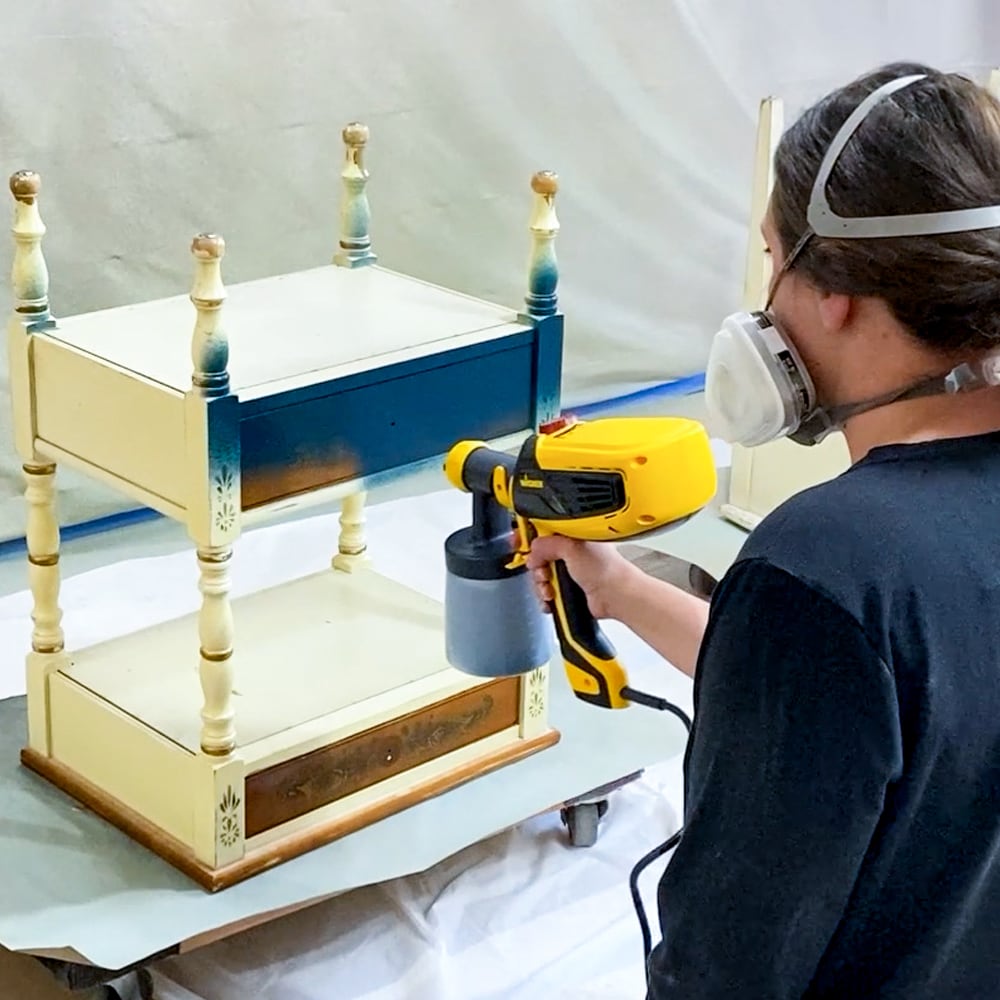
Here are the best paint brushes for painting furniture, the best rollers for painting furniture, and the best hvlp paint sprayers.
And here are some great tips for painting furniture without brush marks.
Just make sure to follow the directions on the container of paint, and let the paint dry before painting on another coat of paint.
Depending on the color of paint you use, and what color your furniture was painted, expect to paint at least 2 coats of paint. 4 or more coats for light paint colors over dark colors.
Speaking of colors, here are the 10 best painted furniture colors if you need some ideas on what color to repaint your furniture.
Topcoat the Paint
Depending on the type of paint you chose, you might need to topcoat your furniture after you’ve painted it.
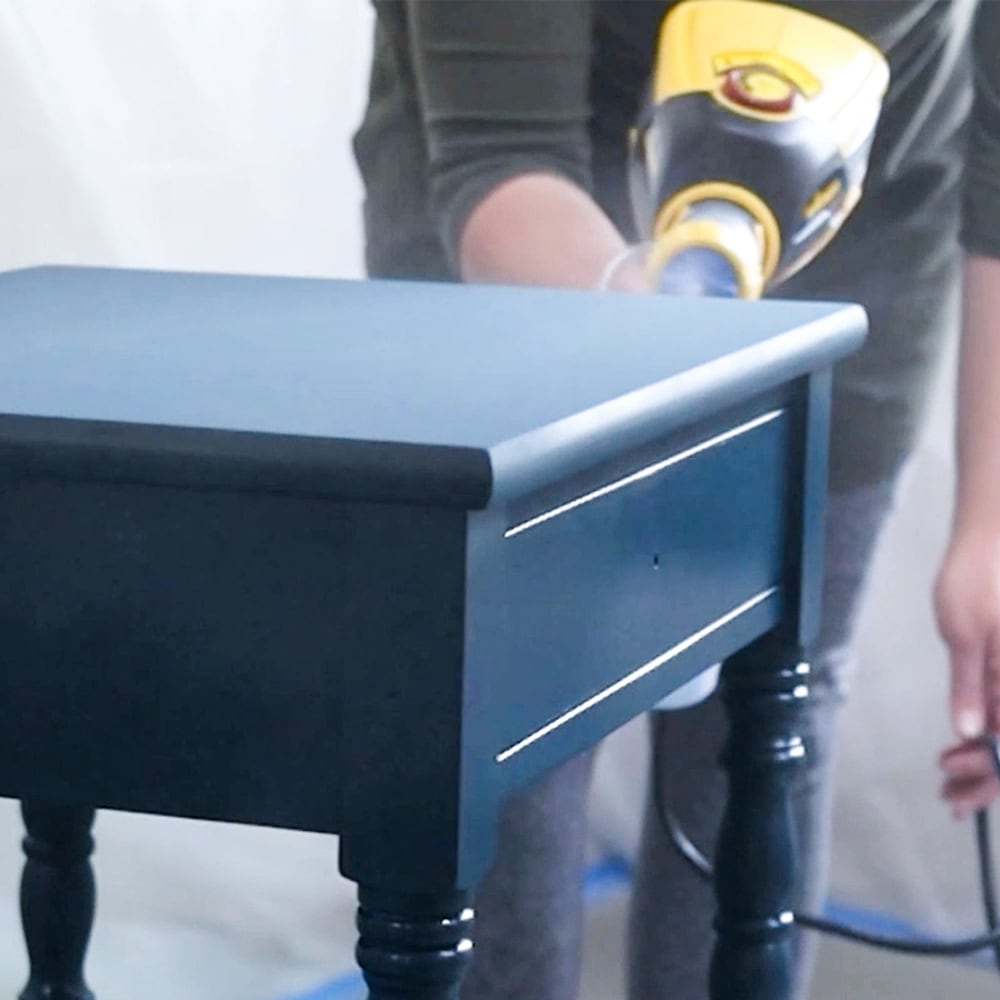
I personally recommend using waterbased polyurethane (also known as polycrylic). It is so much easier in the long run, and it provides a more durable finish.
Here’s how to apply polycrylic to painted furniture.
I really like to spray polyurethane on. It creates a perfect looking finish. Here’s how to spray polyurethane.
Can I paint over chalk paint without sanding or Remove Wax?
You can!
If your wax has dried for 2 months, you can skip removing the wax and sanding and instead use a primer to help your paint stick.
If you use a really good primer like BIN Shellac based primer or clear shellac, the paint will stick well to your chalk and wax painted surface.
For best results, it’s always best to scuff sand before priming.
Best Paint for Painting Over Chalk Paint
The best paint for painting over chalk paint is Heirloom Traditions Paint. It stuck to waxed furniture that had dried for at least 2 months when chalk paint and acrylic paint did not stick very well.
And for bonus points, Heirloom Traditions Paint doesn’t need a topcoat and it dries quickly, so you can finish your project faster. It also comes in a satin sheen that is perfect for furniture.
Here is my full Heirloom Traditions Paint Review to help you decide if it’s the right paint for your project.
Cleaning the wax off with mineral spirits still produced the best results no matter what paint was used though.
More Chalk Painting Tips
- 5 Chalk Paint Problems and How to Fix Them
- How to Remove Chalk Paint Easily and Quickly
- The Truth About Using Chalk Paint for Furniture
- How to Make Furniture Look Rustic
Follow us on YouTube to get more tips for painting furniture.
Or share your project with us on our Facebook Group and be part of our community. See you there!

